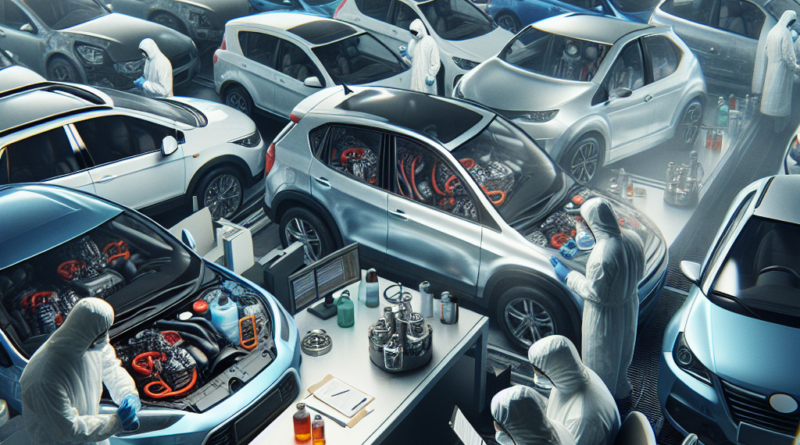Potentially Cancerous Substances Found in Most Cars, Study Reveals
Health Risks Inside Cars: A Hidden Danger
The interior environment of cars can pose health risks.
A study conducted by researchers from renowned universities highlighted the presence of carcinogenic substances, such as tris(1-chloro-2-propyl) phosphate (TCIPP), in a significant percentage of tested vehicles.
These findings raise serious concerns about the long-term effects of drivers and passengers’ exposure to these harmful substances.
The Concerning Presence of Carcinogenic Substances in Cars
The car interior has been a growing concern due to the presence of potentially harmful substances for human health.
In particular, the presence of so-called “flame retardants,” used to reduce the risk of fires inside cars, has been the focus of researchers’ attention.
A study conducted by researchers from Duke, Berkeley, and Toronto universities analyzed the presence of potentially carcinogenic substances inside cars.
Through in-depth research, the scientists examined the chemical composition of car interiors to assess the risk to human health.
Among the substances identified during the study, the presence of flame retardants, in particular, tris(1-chloro-2-propyl) phosphate (TCIPP), emerged.
This compound, used to reduce the risk of fires inside cars, was detected in a significant percentage of the tested vehicles, highlighting the widespread distribution of this substance in modern cars.
TCIPP has been classified as “potentially carcinogenic” based on studies conducted on animals.
These studies have shown a correlation between exposure to TCIPP and the development of liver and uterine tumors.
These results led to the classification of TCIPP as “potentially carcinogenic,” raising further concerns about the safety of substances used inside cars.
Implications of Carcinogenic Substances: Safety Precautions
The authors of the study express serious concerns about the long-term effects of carcinogenic substances on drivers and passengers.
Time spent inside cars, especially in heat conditions, can increase exposure to these harmful substances, with potential health consequences.
Those who spend long hours in cars, such as professional drivers or families with children, are particularly at risk.
The danger increases with heat, in summer and sunny days.
To reduce exposure to these harmful substances, it is crucial to take preventive measures.
Some practical advice includes checking the car’s interior temperature and parking it in the shade whenever possible.
This can help limit the accumulation of toxic gases inside the car.
Additionally, opening the windows during car start-up can improve interior ventilation, allowing fresh air to circulate and thus reducing the concentration of harmful substances.
It is important to consider the role of institutions and authorities in regulating and mitigating the risks associated with the presence of potentially harmful substances inside cars.
Safety regulations and directives must be constantly updated and enforced to protect consumers’ health.
Government agencies and regulatory authorities must collaborate with car manufacturers to develop stricter standards and ensure compliance with existing regulations.
Furthermore, promoting research and development of safer and more sustainable alternative materials for car interiors is necessary to address this issue.




